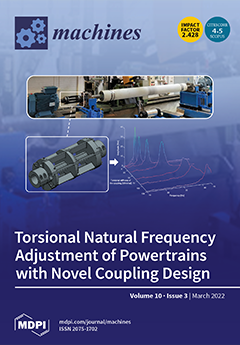Open AccessArticle
Sealing Contact Transient Thermal-Structural Coupling Analysis of the Subsea Connector
by
Dong Liu, Feihong Yun, Wuchao Wang, Kefeng Jiao, Liquan Wang, Zheping Yan, Peng Jia, Xiangyu Wang, Weifeng Liu, Haiting Sun and Xiujun Xu
Cited by 2 | Viewed by 2391
Abstract
Taking the subsea collect connector as an example, the sealing characteristics of the sealing structure of the subsea connector under transient thermal–structural coupling were studied. Based on Airy’s thermal stress function, the mathematical model was established, the complex stress function was used to
[...] Read more.
Taking the subsea collect connector as an example, the sealing characteristics of the sealing structure of the subsea connector under transient thermal–structural coupling were studied. Based on Airy’s thermal stress function, the mathematical model was established, the complex stress function was used to solve the problem, and a three-dimensional transient thermal stress model of the core sealing parts was obtained. The transient thermal–structural coupling stress model of the core seal was obtained by linear superposition principle. The transient temperature field of the subsea collet connector under different working conditions was analyzed. It was found that the larger the temperature difference between the components was, the greater the difference of expansion rate was, and the greater the impact on the sealing performance of LSG was in the process of temperature variation from transient to steady distribution. Numerical simulations of various working conditions under the transient temperature field were carried out. The results showed that sudden change of the temperature and oil–gas pressure will bring about large fluctuations of the maximum contact stress and equivalent stress of the seal, which was easy to fatigue wear, and thus affect the reliability of the sealing performance. Finally, the experiment proves that the sealing ring can maintain sealing performance under the conditions of temperature-cyclic loading. The coupled mathematical model proposed in this paper could be used for the transient thermal–structural coupling theoretical analysis of similar subsea equipment.
Full article
►▼
Show Figures





